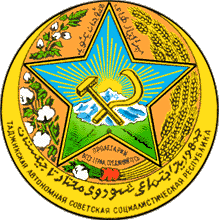|
Rushani Language
Rushani is one of the Pamir languages spoken in Afghanistan and Tajikistan. Rushani is relatively closer to all Northern Pamiri languages sub-group whether it is Shughni, Yazgulami, Sarikuli or Oroshori sharing many grammatical and vocabulary similarity with all of them especially with Shughni and thus some linguists consider it a dialect of Shughni. Rushan is divided into two parts by Panj river where on right bank along Bartang river to the East located Rushan district of GBAO, Tajikistan and on the left side located several villages of Roshan area in northern part of the Sheghnan District, in the Badakhshan Province of Afghanistan and the Gorno-Badakhshan Autonomous Region in Tajikistan. Afghani Roshan consists of six villages including Rubotin, Paguor, Chawed, York, Shaikhin and Chasnud, five of which are located on the bank of the river Panj, which meets at the border of Tajikistan.Muller, K. 2010: ''Language in Community-Oriented and Contact-Oriented Domains: The Ca ... [...More Info...] [...Related Items...] OR: [Wikipedia] [Google] [Baidu] |
Rushan People
Rushan may refer to: *Rushan, Shandong, a county-level city of Weihai, Shandong, China *Ruşan, also known as Rushan, a village and municipality in the Ismailli Rayon of Azerbaijan *Rushan Range, a mountain range in south-western Pamir in Tajikistan *Rushan cheese, cow's milk cheese of Yunnan, China *Rushan (name) *Rūshān, mashrabiya, a type of projecting window characteristic of traditional architecture in the Islamic world *Rushan people, a Iranian peoples, Iranic-Pamiri people, Pamiri ethno-linguistic group of people See also *Rushon District, Gorno-Badakhshan Autonomous Province, Tajikistan **Rushon or Rushan, the capital town of the district {{disambiguation, geo ... [...More Info...] [...Related Items...] OR: [Wikipedia] [Google] [Baidu] |
Badakhshan Province
Badakhshan Province (Persian/ Uzbek: , ''Badaxšān'') is one of the 34 provinces of Afghanistan, located in the northeastern part of the country. It is bordered by Tajikistan's Gorno-Badakhshan in the north and the Pakistani regions of Lower and Upper Chitral and Gilgit-Baltistan in the southeast. It also has a 91-kilometer (57-mile) border with China in the east. It is part of a broader historical Badakhshan region, parts of which now also lie in Tajikistan and China. The province contains 22 districts, over 1,200 villages and approximately 1 055 00people. Fayzabad, Badakhshan, Fayzabad serves as the provincial capital. Resistance activity has been reported in the province since the 2021 Taliban takeover of Afghanistan. Etymology Badakhshan's name comes from the Middle Persian word "badaxš", which is an official title. The word "ān" is a suffix which demonstrates a place's name; therefore the word "badaxšān" means a place belonging to a person called "badaxš". Duri ... [...More Info...] [...Related Items...] OR: [Wikipedia] [Google] [Baidu] |
Perfective Aspect
The perfective aspect (abbreviated ), sometimes called the aoristic aspect, is a grammatical aspect that describes an action viewed as a simple whole; i.e., a unit without interior composition. The perfective aspect is distinguished from the imperfective aspect, which presents an event as having internal structure (such as ongoing, continuous, or habitual actions). The term ''perfective'' should be distinguished from ''perfect'' (see below). The distinction between perfective and imperfective is more important in some languages than others. In Slavic languages, it is central to the verb system. In other languages such as German, the same form such as ''ich ging'' ("I went", "I was going") can be used perfectively or imperfectively without grammatical distinction. In other languages such as Latin, the distinction between perfective and imperfective is made only in the past tense (e.g., Latin ''veni'' "I came" vs. ''veniebam'' "I was coming", "I used to come"). However, perfective ... [...More Info...] [...Related Items...] OR: [Wikipedia] [Google] [Baidu] |
Oblique Case
In grammar, an oblique (abbreviated ; from la, casus obliquus) or objective case (abbr. ) is a nominal case other than the nominative case, and sometimes, the vocative. A noun or pronoun in the oblique case can generally appear in any role except as subject, for which the nominative case is used. The term ''objective case'' is generally preferred by modern English grammarians, where it supplanted Old English's dative and accusative. When the two terms are contrasted, they differ in the ability of a word in the oblique case to function as a possessive attributive; whether English has an oblique rather than an objective case then depends on how "proper" or widespread one considers the dialects where such usage is employed. An oblique case often contrasts with an unmarked case, as in English oblique ''him'' and ''them'' versus nominative ''he'' and ''they''. However, the term ''oblique'' is also used for languages without a nominative case, such as ergative–absolutive langua ... [...More Info...] [...Related Items...] OR: [Wikipedia] [Google] [Baidu] |
Transitive Alignment
In linguistic typology, transitive alignment is a type of morphosyntactic alignment used in a small number of languages in which a single grammatical case is used to mark both arguments of a transitive verb, but not with the single argument of an intransitive verb. Such a situation, which is quite rare among the world's languages, has also been called a ''double-oblique'' clause structure. Rushani, an Iranian dialect, has this alignment in the past tense. That is, in the past tense (or perhaps perfective aspect), the agent and object of a transitive verb are marked with the same case ending, while the subject of an intransitive verb is not marked. In the present tense, the object of the transitive verb is marked, the other two roles are not – that is, a typical nominative–accusative alignment.J.R. Payne, 'Language Universals and Language Types', in Collinge, ed. 1990. ''An Encyclopedia of Language''. Routledge. From Payne, 1980. Intransitive: no case marking : :'I went to Xor ... [...More Info...] [...Related Items...] OR: [Wikipedia] [Google] [Baidu] |
Institute For Bible Translation
The Institute for Bible Translation (IBT) was founded in Stockholm, Sweden in 1973 by the Bosnian- Croatian poet Borislav Arapović, its main task being to publish Bibles for "non-Slavic peoples in Slavic countries," not just Bible translations into the languages of Russia but also Central Asian languages. Eighty-five million people in non-Slavic ethnic groups living in the former Soviet Union—now CIS, including Russia—represent a tremendous diversity of languages (at least 130 different languages) and religions (Islam, Buddhism and shamanism). The Institute for Bible Translation is also a part of the Forum of Bible Agencies International. History of IBT 1970s: Reprints of 19th-century translations Initially IBT also republished 19thC BFBS versions which had fallen out of print, such as the Psalms in Yakut (1897, reprinted IBT 1975). 1980s: new translations programme The IBT office in Helsinki was opened in 1983. It coordinates the translation projects in 12 Finno-Ugric lang ... [...More Info...] [...Related Items...] OR: [Wikipedia] [Google] [Baidu] |
Latin Script
The Latin script, also known as Roman script, is an alphabetic writing system based on the letters of the classical Latin alphabet, derived from a form of the Greek alphabet which was in use in the ancient Greek city of Cumae, in southern Italy ( Magna Grecia). It was adopted by the Etruscans and subsequently by the Romans. Several Latin-script alphabets exist, which differ in graphemes, collation and phonetic values from the classical Latin alphabet. The Latin script is the basis of the International Phonetic Alphabet, and the 26 most widespread letters are the letters contained in the ISO basic Latin alphabet. Latin script is the basis for the largest number of alphabets of any writing system and is the most widely adopted writing system in the world. Latin script is used as the standard method of writing for most Western and Central, and some Eastern, European languages as well as many languages in other parts of the world. Name The script is either called Latin script ... [...More Info...] [...Related Items...] OR: [Wikipedia] [Google] [Baidu] |
Cyrillic Script
The Cyrillic script ( ), Slavonic script or the Slavic script, is a writing system used for various languages across Eurasia. It is the designated national script in various Slavic languages, Slavic, Turkic languages, Turkic, Mongolic languages, Mongolic, Uralic languages, Uralic, Caucasian languages, Caucasian and Iranian languages, Iranic-speaking countries in Southeastern Europe, Eastern Europe, the Caucasus, Central Asia, North Asia, and East Asia. , around 250 million people in Eurasia use Cyrillic as the official script for their national languages, with Russia accounting for about half of them. With the accession of Bulgaria to the European Union on 1 January 2007, Cyrillic became the third official script of the European Union, following the Latin script, Latin and Greek alphabet, Greek alphabets. The Early Cyrillic alphabet was developed during the 9th century AD at the Preslav Literary School in the First Bulgarian Empire during the reign of tsar Simeon I of Bulgar ... [...More Info...] [...Related Items...] OR: [Wikipedia] [Google] [Baidu] |
Persian Language
Persian (), also known by its endonym Farsi (, ', ), is a Western Iranian language belonging to the Iranian branch of the Indo-Iranian subdivision of the Indo-European languages. Persian is a pluricentric language predominantly spoken and used officially within Iran, Afghanistan, and Tajikistan in three mutually intelligible standard varieties, namely Iranian Persian (officially known as ''Persian''), Dari Persian (officially known as ''Dari'' since 1964) and Tajiki Persian (officially known as ''Tajik'' since 1999).Siddikzoda, S. "Tajik Language: Farsi or not Farsi?" in ''Media Insight Central Asia #27'', August 2002. It is also spoken natively in the Tajik variety by a significant population within Uzbekistan, as well as within other regions with a Persianate history in the cultural sphere of Greater Iran. It is written officially within Iran and Afghanistan in the Persian alphabet, a derivation of the Arabic script, and within Tajikistan in the Tajik alphabet, a der ... [...More Info...] [...Related Items...] OR: [Wikipedia] [Google] [Baidu] |
Russian Language
Russian (russian: русский язык, russkij jazyk, link=no, ) is an East Slavic languages, East Slavic language mainly spoken in Russia. It is the First language, native language of the Russians, and belongs to the Indo-European languages, Indo-European language family. It is one of four living East Slavic languages, and is also a part of the larger Balto-Slavic languages. Besides Russia itself, Russian is an official language in Belarus, Kazakhstan, and Kyrgyzstan, and is used widely as a lingua franca throughout Ukraine, the Caucasus, Central Asia, and to some extent in the Baltic states. It was the De facto#National languages, ''de facto'' language of the former Soviet Union,1977 Soviet Constitution, Constitution and Fundamental Law of the Union of Soviet Socialist Republics, 1977: Section II, Chapter 6, Article 36 and continues to be used in public life with varying proficiency in all of the post-Soviet states. Russian has over 258 million total speakers worldwide. ... [...More Info...] [...Related Items...] OR: [Wikipedia] [Google] [Baidu] |
Tajik Language
Tajik (Tajik: , , ), also called Tajiki Persian (Tajik: , , ) or Tajiki, is the variety of Persian spoken in Tajikistan and Uzbekistan by Tajiks. It is closely related to neighbouring Dari with which it forms a continuum of mutually intelligible varieties of the Persian language. Several scholars consider Tajik as a dialectal variety of Persian rather than a language on its own. The popularity of this conception of Tajik as a variety of Persian was such that, during the period in which Tajik intellectuals were trying to establish Tajik as a language separate from Persian, prominent intellectual Sadriddin Ayni counterargued that Tajik was not a "bastardised dialect" of Persian.Shinji ldoTajik Published by UN COM GmbH 2005 (LINCOM EUROPA) The issue of whether Tajik and Persian are to be considered two dialects of a single language or two discrete languages has political sides to it. By way of Early New Persian, Tajik, like Iranian Persian and Dari Persian, is a continuation of Midd ... [...More Info...] [...Related Items...] OR: [Wikipedia] [Google] [Baidu] |



